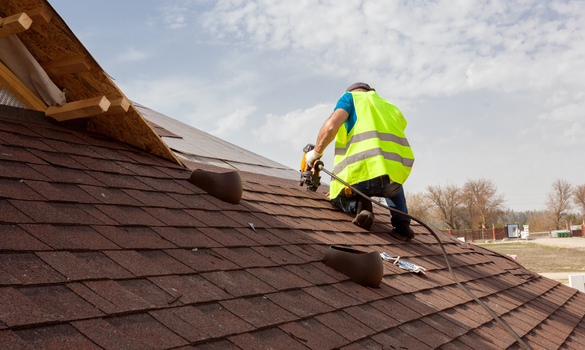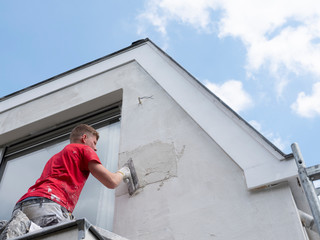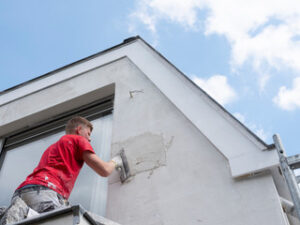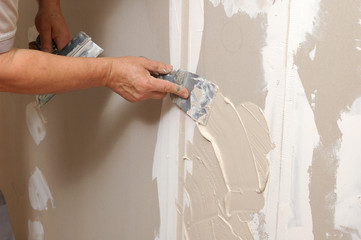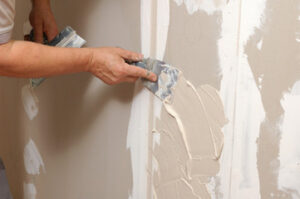Roofing services handle all aspects of roof installation, repair, and maintenance. They also inspect and repair tiny, isolated faults in your roof before they cause serious damage or deterioration.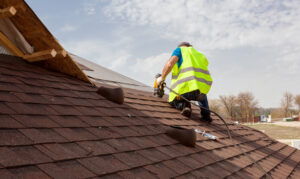
Besides shingles, other residential roofing options include asphalt roll-roofing and EPDM roof systems that resemble large sheets of inner tube rubber. Each has advantages and disadvantages.
If the shingles on your roof are worn out or missing altogether, it’s time to get a new one. A professional roofer will examine your current roof and help you decide whether to repair it or replace it. If you opt for replacement, the craftsperson will work with you to choose a style that suits your property and local weather conditions. For example, if your home sits in an area prone to snow, the craft may recommend metal snow rail and snow retention systems along with a system for ridge venting that keeps attic air flowing.
In addition to granule loss, other signs that it’s time for a new roof include water stains on ceilings and walls, which are often caused by leaky or damaged shingles. If you spot these stains, it’s best to call a roofer right away; failing to act quickly can lead to mold and other structural problems in your home.
A new roof also provides an opportunity to install other roofing features. These can include soffit vents, which help with attic air circulation and can be particularly helpful in keeping your home cool in summer. Other features a roofer might recommend are skylights and dormer windows, which need special flashing and should always be installed by a qualified professional.
Replacing your roof is a big job, and one that typically requires tearing off the old shingles. A good roofing company will lay protective tarps to protect the rest of your property and clean up afterward, making sure to leave no debris behind.
While the price tag for replacing your roof can vary based on local costs and your choice of materials, it’s typically around $2 to $7 per square foot on average, according to HomeAdvisor. This includes the cost of labor and removal of the existing roof, as well as any needed repairs.
A re-roofing project can be expensive, but it can be a worthwhile investment for homeowners who are planning to sell their property in the future. A well-maintained, attractive-looking roof can add value to your home and make it more appealing to potential buyers.
Roof Repair
Unless you have the skills and equipment to replace your roof yourself, it’s a good idea to get roofing repair services as soon as you notice problems. Small issues like leaking are often easy to fix, but can lead to large-scale damage if not addressed quickly. A professional will be able to identify and repair problems that you might not even see from the ground, such as worn sealants or gaps.
Depending on the problem, a roofer may choose different approaches to repair it. For example, damaged flashing might be replaced, and areas of loose or missing shingles will be caulked or tarred. Vent boots are also a common site for leaks, and if these are damaged, they will be replaced with new ones.
Leaking is often the most obvious sign that you need roofing services, but other problems can be equally serious. For instance, water stains on ceilings and walls are a clear indication that your roof has a problem.
A professional roofer will be able to find the source of the leak, as well as any other areas that might be vulnerable to future damage. They can use various methods, including spraying the area with water to test for moisture and identifying areas of potential entry.
If you have a major roofing issue, it might be best to replace the whole roof rather than simply repairing it. This is usually the case if the damage is extensive, or if you want the peace of mind of knowing that your roof will be protected for decades to come.
One other thing to consider when deciding whether to repair or replace your roof is the effect that the project will have on your home’s aesthetic. Replacing your roof can be quite a messy job, with lots of nail-hammering and debris, and it will certainly create a lot of noise. In most cases, you’ll need to be out of the house for the majority of the reroofing project. For these reasons, many people choose to hire a roofing contractor for a re-roofing project only when it is absolutely necessary.
Roof Inspection
A roofing inspection is a great way to check the condition of your roof and identify any issues that need addressing. Your roof is one of the most important aspects of your home, and it’s essential to keep it in good shape to prevent leaks and other problems. The inspection will also help you plan for any repairs and maintenance that are needed to extend the life of your roof.
During the roof inspection, your inspector will take note of any missing or cracked shingles, damaged or exposed flashing, and water-damaged siding. They’ll also look at the condition of the soffits and roof eaves, as well as the gutter system. The inspector may also check the attic for signs of moisture or mold. They’ll also look for areas that are in need of insulation or ventilation.
The cost of a roof inspection depends on several factors, including the age of your house and its size. Newer homes are less likely to have major problems, so an inspection will usually be quicker and cheaper. On the other hand, older homes have more potential issues and will require more time to inspect.
A professional inspector will usually begin with a walk-around of the property from the ground. They’ll look for signs of wear and tear, such as worn or curled shingles or any cracks in the concrete. They’ll also look for any areas where the shingles are losing granules or becoming unglued.
Your inspector may also use thermal imaging to determine if there’s any hidden moisture in your roof. This is a great way to detect water or moisture damage that might be difficult to spot with visual observations.
During the inspection, your roofer will take note of any damage or issues and provide you with a detailed report. They’ll also recommend any necessary repairs or replacements. If you have any questions about the report, feel free to ask your inspector. It’s a good idea to be present during the inspection so that you can ask any questions and get answers immediately.
Roof Maintenance
Roofing contractors not only offer installation services, but they can help you with any repairs you may need to make. They can also upgrade your roof to a more energy-efficient and aesthetically pleasing option. They are able to handle everything from installing new shingles to installing a skylight or venting system. They can even add gutters, leaders, downspouts, and other features to your home’s exterior.
Depending on the situation, you may need to call in a roofing service to repair damage caused by severe storms or just everyday wear and tear. They can also perform inspections of your roof to identify any problems that may be arising. They are able to spot issues that are easily overlooked, such as a crack in the flashing or a loose shingle. They can also fix leaks that are often the result of a problem with the roof’s flashing or gutters.
Another service that many roofing companies offer is waste removal and clean-up. Roof replacements and installations produce a lot of waste in the form of wood cuttings, broken shingles, and other debris. They can also create a mess by throwing debris in your front yard. A reputable roofing company will coordinate with a waste management company to remove all this trash from your property.
Leaks are one of the most common problems that people encounter with their roofs. These can lead to mold growth, water stains on ceilings and walls, and other problems that can affect the interior of your home or business. These can also be expensive to repair, so it is important to get them fixed as soon as you notice any signs of a leak.
Roofing maintenance is an important service that all homeowners and businesses should consider. Regular roofing maintenance can extend the life of your roof and help prevent costly repairs down the road. Roofing maintenance can also include cleaning organic debris from your gutter and leader systems and scrubbing the edges of your roof to ensure all sealants are in good condition and there are no holes or cracks.
